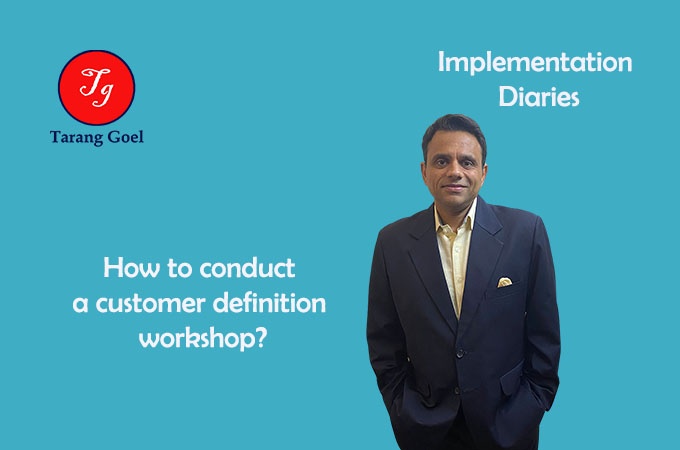This writeup will deal with customer definition process on greenfield CRM implementations. Future state customer definition is one of the foundational pillars of CRM transformation programs.
Customer definition is a very broad and multi-dimensional exercise. Customer definition can happen at multiple levels in an enterprise and at each level it has a different meaning. For example, customer definition can happen as a part of decision of who does an organization want to sell. It can also happen at the level of a CRM implementation where the critical factor is what customer information is being looked at.
Here is how a customer can be defined on CRM implementations:
- Ascertain the current definition of customer
- Diagnose the missing view of the customer by listing out pain points with the current view of the customer
- Conduct customer definition sessions with all relevant stakeholders including end users like CSR’s
- Evaluate the future customer out of the box view in Salesforce
- Create the future state of the customer
Step 1: Ascertain the current definition of customer – Current definition of the customer can be ascertained by analysis of the current CRM system of an enterprise. It could be as basic as an excel sheet or a sophisticated CRM system. This is a part of As- Is analysis. Current definition means the current view of the customer and the information that is being currently looked at. It could be a few fields or a full-fledged Customer 360 degree view.
Step 2: Diagnose the missing view of the customer by listing out pain points with the current view of the customer – Next step is to find out the missing view of the customer and the pain points with the current view. Missing view of the customer is the missing fields or missing information or missing downstream or upstream processes related to a customer. For example, on one of my implementations one of the pain points of the end user was that they were only viewing the complaints lodged by customer on the phone. They were not exposed to the complaints registered by customer through other channels. This would result in very difficult and awkward interactions with the customer.
Step 3: Conduct customer definition sessions with all relevant stakeholders including end users like CSR’s – Once the missing view is identified and pain points are known then a workshop can be conducted with relevant stakeholders and end users to analyze and prioritize the solutions for the pain points and to prepare a list of data required for the future state of the customer. For example, if the CRM system is rolled out to call center reps (CSR’s) then they should be actively involved in these discussions.
Step 4: Evaluate the future customer out of the box view in Salesforce – After the missing customer information is identified and the future state is defined on paper, it is important to evaluate the GAP in present and future state of the customer. This can be done by analyzing the customer data model in the future state CRM application. For example, if Salesforce is implemented then it’s data model should be analyzed to see what is offered out of the box. It is also important to ascertain if future state of the customer can be implemented via declarative development or coding is required. Customer model Prototyping should be undertaken at this stage.
Step 5: Create the future state of the customer – Finally by following the above steps and active prototyping a customer future state can be arrived at. In Salesforce this can consist of Record types, Fields, Account Hierarchy, Master Detail, Lookup and Junction relationships of Accounts with other objects and data virtualization.
This model of customer definition can be a starting point on any CRM transformation program. There are other foundational pillars of an implementation which I will take one by one and explain in separate blogs.
Thanks for reading this. Your likes, shares and comments motivate me to produce more content.


0 Comments